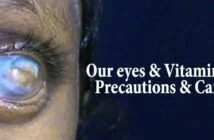Who can be affected by colour blindness?
As many as 8 percent of men and 0.5 percent of women with Northern European ancestry have the common form of red-green colour blindness.
Men are much more likely to be colourblind than women because the genes responsible for the most common, inherited colour blindness are on the X chromosome. Males only have one X chromosome, while females have two X chromosomes. In females, a functional gene on only one of the X chromosomes is enough to compensate for the loss on the other. This kind of inheritance pattern is called X-linked, and primarily affects males. Inherited color blindness can be present at birth, begin in childhood, or not appear until the adult years.
How Genes are Inherited
Genes are bundled together on structures called chromosomes. One copy of each chromosome is passed by a parent at conception through egg and sperm cells. The X and Y chromosomes, known as sex chromosomes, determine whether a person is born female (XX) or male (XY) and also carry other traits not related to gender.
In X-linked inheritance, the mother carries the mutated gene on one of her X chromosomes and will pass on the mutated gene to 50 percent of her children. Because females have two X chromosomes, the effect of a mutation on one X chromosome is offset by the normal gene on the other X chromosome. In this case the mother will not have the disease, but she can pass on the mutated gene and so is called a carrier. If a mother is a carrier of an X-linked disease (and the father is not affected), there is a:
- 1 in 2 chance that a son will have the disease,
- 1 in 2 chance that a daughter will be a carrier of the disease,
- No chance that a daughter will have the disease.
In autosomal recessive inheritance, it takes two copies of the mutant gene to give rise to the disease. An individual who has one copy of a recessive gene mutation is known as a carrier. When two carriers have a child, there is a:
- 1 in 4 chance of having a child with the disease,
- 1 in 2 chance of having a child who is a carrier,
- 1 in 4 chance of having a child who neither has the disease nor is a carrier.
In autosomal dominant inheritance, it takes just one copy of the mutant gene to bring about the disease. When an affected parent with one dominant gene mutation has a child, there is a 1 in 2 chance that a child will inherit the disease.



